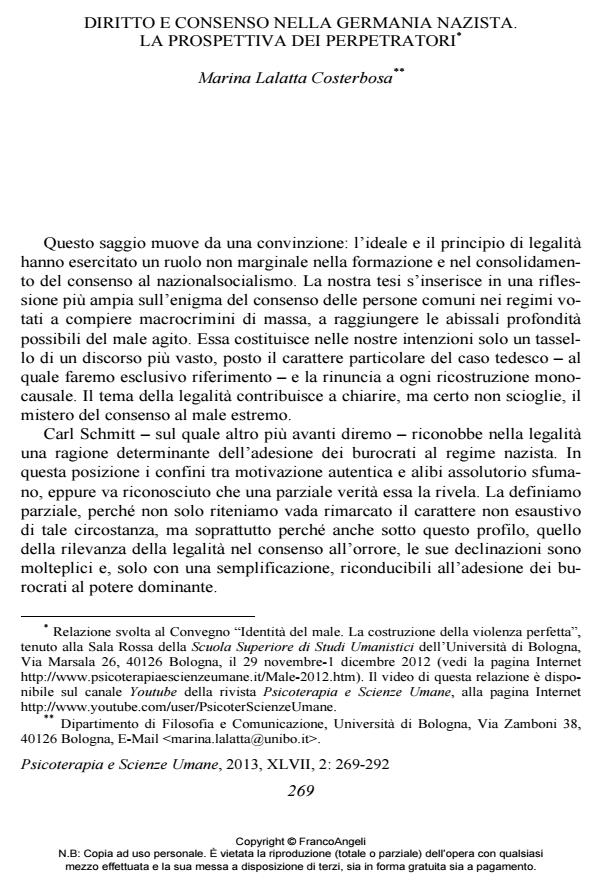Law and consent in Nazi Germany: The perpetrators’ perspective
Journal title PSICOTERAPIA E SCIENZE UMANE
Author/s Costerbosa Marina Lalatta
Publishing Year 2013 Issue 2013/2
Language Italian Pages 24 P. 269-292 File size 655 KB
DOI 10.3280/PU2013-002009
DOI is like a bar code for intellectual property: to have more infomation
click here
Below, you can see the article first page
If you want to buy this article in PDF format, you can do it, following the instructions to buy download credits

FrancoAngeli is member of Publishers International Linking Association, Inc (PILA), a not-for-profit association which run the CrossRef service enabling links to and from online scholarly content.
This essay discusses the mass consent to enacted evil, in particular regarding National Socialism. It is suggested that the concept of legality played a major role in the creation of consensus from the perpetrators’ viewpoint. Legality contributed to consolidation of the regime and to its support because it reinforced bureaucracy and accelerated the Nazism’s criminal project. With the collusion of the amphibious nature of Weimar Constitution, full awareness and participation of the regime’s ruling class, zealousness of German jurists (judges such as Roland Freisler and Hans Frank, or theorists such as Carl Schmitt and Karl Larenz), the principle of legality favoured, together with other propulsive factors, the efficacy of the Führer’s power system, also regarding the consent of the civilian population.
Keywords: Legality, Weimar, consent, Nazism, bureaucracy
Costerbosa Marina Lalatta, Diritto e consenso nella Germania nazista. La prospettiva dei perpetratori in "PSICOTERAPIA E SCIENZE UMANE" 2/2013, pp 269-292, DOI: 10.3280/PU2013-002009